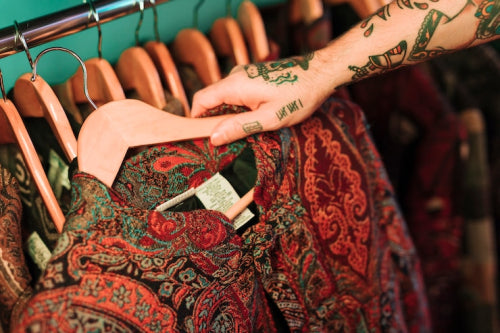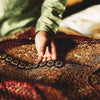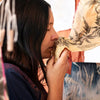Traditional Indian Textiles Inspire Contemporary Design Trends

In a bustling Mumbai atelier, a weaver unrolls a bolt of khadi cotton, its hand-spun threads revealing a textured dance of subtle imperfections. This is the fabric Jawaharlal Nehru hailed as India's emblem of independence, a symbol of resilience. Now, it graces catwalks in Milan and adorns cushions in London penthouses. The revival of traditional Indian textiles is no passing trend it's a global movement, blending centuries-old artistry with contemporary design. From the luminous weaves of Banarasi silk to the vivid patterns of Bandhani, India's textile legacy is redefining fashion and home decor, proving that heritage can pulse with modern vitality.
India's textile tradition, woven over millennia, is a vibrant chronicle of culture and craftsmanship. Nehru once declared, The history of India may well be written with textile as its leading motif. Fibre2Fashion article. Today, techniques like khadi's rustic simplicity, Ikat's geometric precision, and Kanjivaram's opulent silks are experiencing a renaissance. Platforms like IndieHaat, a digital marketplace championing Indian artisans, are driving this resurgence, linking rural weavers with international buyers. By fusing tradition with innovation, they're not merely preserving crafts they're making them essential to a world craving authenticity and sustainability.
Fast fashion erodes cultural heritage, sidelining artisans and reducing traditions to trends. At IndieHaat, we champion India's craftspeople with handcrafted sarees, apparel, dcor, and skincare rooted in authenticity. Each piece embodies skill and ethical care. Support artisans and preserve India's timeless legacy Shop Now!
Crafting Modernity from Tradition
Step into a luxury boutique in 2025, and Indian textiles command attention. Khadi, once a beacon of self-sufficiency, has become a cornerstone of eco-conscious fashion. Its countless minute irregularities, as noted in a GQ feature on Japanese brand ITOH, lend a tactile charm unmatched by factory-made fabrics. Designers embrace these quirks, artfully distressing surfaces to amplify their rugged allure without compromising integrity. Meanwhile, Ikat and Bandhani patterns bold and intricate adorn everything from high-end scarves to fast-fashion dresses, their vivid dyes and geometric flair challenging minimalist norms.
Sustainability anchors these textiles to the future. A 2025 arXiv study highlights India's efforts to adopt circular economy models, driven by increasing environmental awareness and resource demands. Small and medium enterprises face challenges in implementing these practices due to a lack of clear guidelines, yet the momentum continues. Consumers, particularly younger generations, crave eco-friendly products, and India's handwoven, organic textiles deliver. The home textiles market, valued at $4.3 billion in 2024 and projected to reach $6.6 billion by 2033 at a 4.84% growth rate, reflects this demand. Organic cotton bed linens, silk curtains, and handwoven cushions are surging, driven by urban growth and rising incomes.
Innovation keeps pace. Designers use digital printing to replicate traditional block prints, preserving the essence of handcraft while scaling production. A 2025 Edinbox guide calls sustainability the bedrock of textile design, with Indian creators blending ancient techniques with modern hues. In Jharkhand, designers like Doman Tudu, a NIFT Bengaluru graduate, incorporate tribal Sohrai and Kohvar art into contemporary garments, as reported by The Times of India. Available on platforms like IndieHaat, these designs captivate global audiences, showing that tradition can be cutting-edge.
From Catwalks to Interiors
Indian textiles transcend fashion, redefining home decor with a fusion of heritage and elegance. Handmade carpets, valued at $56.4 million in 2024 and expected to grow at 8% annually through 2030, exemplify this trend. Their intricate patterns and superior craftsmanship resonate with India's expanding middle class, who view these pieces as markers of refined taste. From Jaipur's wool rugs to Kashmir's silk tapestries, these textiles infuse modern homes with warmth and narrative.
Global designers are capitalizing on this allure. Collaborations yield Banarasi silk cushions in Paris showrooms and block-printed drapes in Dubai villas. The home furnishings market, valued at $6.96 billion in 2025 and projected to hit $11.51 billion by 2031 with an 8.75% growth rate, thrives on online retail and urban demand. Social media amplifies this, with Instagram showcasing how a Kantha-stitched throw can transform a sleek sofa. These textiles aren't mere decor they're cultural artifacts, carrying the stories of their makers.
Luxury markets are equally enthralled. Premium brands weave Indian textiles into exclusive collections sarees reimagined as gowns, shawls paired with tailored suits. A Fibre2Fashion article notes consumer's growing preference for products reflecting authenticity and values. IndieHaat's fair-trade, artisan-centric model meets this demand, offering bespoke pieces that balance exclusivity with accessibility.
Navigating the Challenges
The textile revival isn't without obstacles. The arXiv study reveals that small enterprises struggle to implement circular practices due to undefined frameworks, hindering sustainable scaling. Mass production threatens the individuality that defines handcrafted textiles, while exclusivity can alienate broader markets. Balancing authenticity with commercial viability remains a delicate act.
Ethical sourcing poses further challenges. Organic cotton and natural dyes are sustainable, but their production can strain resources if mismanaged. The environmental impact of even eco-friendly textiles requires careful oversight, as does the tension between commercialization and cultural integrity. Artisans, often from rural communities, deserve fair wages, yet global supply chains can obscure accountability. IndieHaat addresses this by emphasizing transparency, ensuring artisans reap the benefits of global demand.
A Legacy Woven for Tomorrow
The future of Indian textiles shines as brightly as their vibrant threads. Experts advocate preserving these crafts while adapting them for modern needs. The Edinbox guide forecasts 2025 as a year of dynamic innovation, rooted in sustainability and Indian identity. As consumers prioritize unique, ethical products, handcrafted textiles will only gain prominence.
IndieHaat and similar platforms are linchpins, connecting rural artisans to global markets. By empowering weavers many from marginalized groups they foster livelihoods and preserve traditions. The Times of India's Jharkhand story underscores this: once-overlooked artisans are now global ambassadors, their work sustaining both culture and economies.
Designers must engage with India's textile heritage responsibly, sourcing ethically and compensating artisans fairly. Consumers, too, have a role choosing brands like those on IndieHaat, where purchases support weavers directly. The numbers are striking billions in market growth, millions in carpets but the human story resonates deeper: a sari from Varanasi, a rug from Jaipur, a curtain from Gujarat, each a testament to India's artistry.
Standing in that Mumbai atelier, I ran my fingers over the khadi's textured surface. It wasn't just fabric it was a bridge between eras, from village looms to global stages. Indian textiles are no relics; they're vibrant, evolving, and weaving a future where tradition and innovation intertwine, one thread at a time.
Disclaimer: The above helpful resources content contains personal opinions and experiences. The information provided is for general knowledge and does not constitute professional advice.
You may also be interested in: Top 10 Navratri Outfit Ideas for 2024: Traditional Modern Styles
Fast fashion erodes cultural heritage, sidelining artisans and reducing traditions to trends. At IndieHaat, we champion India's craftspeople with handcrafted sarees, apparel, dcor, and skincare rooted in authenticity. Each piece embodies skill and ethical care. Support artisans and preserve India's timeless legacy Shop Now!
Powered by flareAI.co





